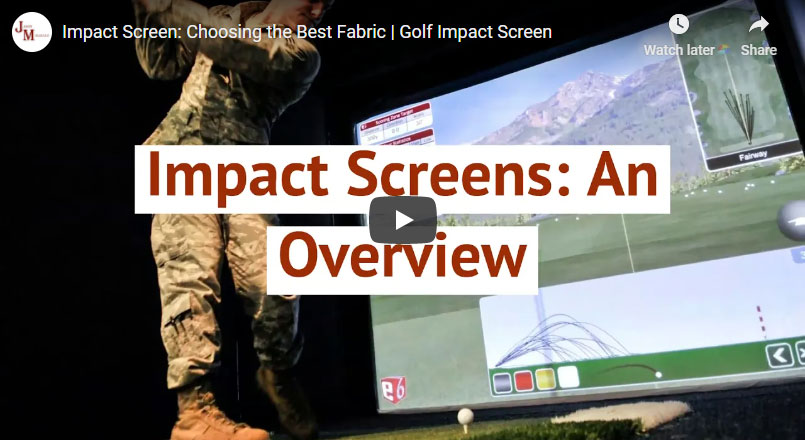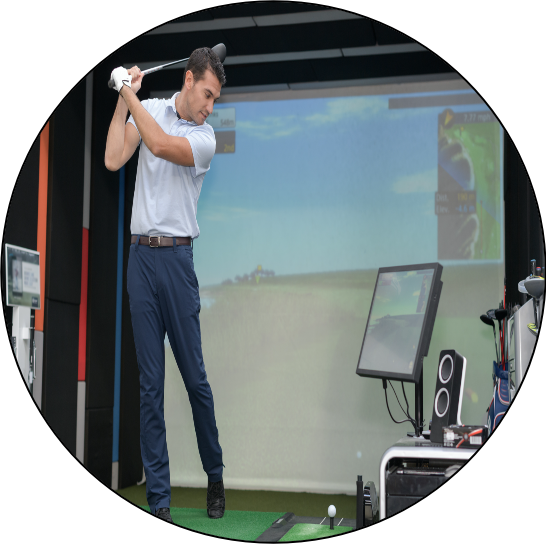The impact screens used in golf practice simulators represent a growing market with many unique challenges. They must show a clear image of the simulated fairway while remaining durable enough to stand up to thousands of impacts over time. Ultimately, the performance of the simulator hinge on the quality of the fabric used to create the screen. Choosing the appropriate fabric to meet these challenges is vital to the production of a quality screen.
Golf Impact Screens – An Overview
The market for impact screens is actually fairly new. It began emerging within the past decade, leading to many experiments and innovations within the industry as manufacturers tried to determine the best fabrics for the job.
As time has passed, however, the market has drastically grown-and the technology has evolved right along with it. Impact screens need to be smooth and light to maintain a clear projection image. However, since golf balls can reach startlingly high speeds, it is absolutely vital that the screen be made from fabric that can safely absorb the impact without damage or tearing.
At Jason Mills we produce a good, better, best line of materials designed to meet your specific impact screen needs. We offer varying degrees of material density – created by a combination of needles per inch and yarn weight – to produce fabrics for standard and high definition imagery.
Impact Screen Material-Choosing the Best for Your Application
A golf impact screen is only as good as the fabric it is made from. There are a variety of factors to consider when creating impact screens:
- The fabric should allow the ball to hit the screen with minimal bounce back or puckering.
- The screen should absorb the sound of the impact.
- The impact screen should be durable.
- The fabric must be capable of displaying a bright, high-contrast image.
Polyester mesh fabrics are excellent choices when seeking a fabric for impact screens, as polyester is made from a powerful synthetic resin often utilized to create fibers used in industrial textiles.
Another important consideration for impact screens is their size. Wider screens will, generally speaking, provide a more satisfactory experience. This is where we really stand apart from the competition at Jason Mills—our textiles for golf impact screens are always a minimum of 120 inches wide, offering an ideal choice for most simulator needs.
Case Study-Golf Impact Screen Manufacturer
Recently, our composite fabrics were tested by an industry-leading manufacturer of impact screens used in commercial golf simulators. Our Premium and Preferred models were both analyzed, both of which utilize our knitted composite textiles.
Testers practiced their golf swings, landing approximately 34,000 shots in total. Even after this intense usage, both screens held up well. In fact, the Premium screen exhibited hardly any stretching, and maintained a particularly clear image throughout the testing phase.
Knitted Textiles From Jason Mills
At Jason Mills, we are the knit textiles experts. No matter your needs, we can research and develop an appropriate knitted composite fabric that meets all of the challenges of your application. To work with us on your next project, contact us or request a quote today.


